
15 minute read
Woodhall Spa’s GM on renovating the Hotchkin
The interview... RICHARD LATHAM
Woodhall Spa’s general manager negotiated with world-renowned architect Tom Doak to renovate the iconic Hotchkin course. He tells Steve Carroll why the project was necessary and how it succeeded against the odds
Advertisement
Why embark on a renovation project at Woodhall Spa? The course was losing its heathland characteristics and, basically, in the last 60 years no one wanted to cut a tree down. You realise you have issues when you start having to play around trees that were not part of the original design. None of these had been planted and, indeed, early photographs confirm next to none.
The Hotchkin Course is a SSSI site, governed by Natural England because of its valuable heathland characteristics. They were particularly keen in supporting this restoration project because

it provided the opportunity to remove trees and regenerate so many diverse heathland habitats. During the work, we had other architects visiting to see Tom Doak in action. One said to me: ‘Richard, how did the golf course ever get into this state?’ Normally, I can answer most questions but I was struggling a little bit on that one. He said: ‘Tell me, is it a case of benign neglect?’ I thought that was a wonderful expression and that’s what happens. People become attached to trees, they don’t appreciate they can be good and bad. In this case, they really weren’t helping the golf course. The bunkers had also lost their original shape over the years, as they had been made deeper without a proper assessment of Richard Latham Richard Latham has been general manager at Woodhall Spa for 22 years. A former aerospace engineer, he became a golf consultant and marketing expert before helping establish the National Golf Centre in 1998. A talented golfer, he is a multiple winner of the English Senior Men’s Championship, an England player and has represented GB&I in the Concession Cup. He is also a highly regarded author, having written a number of historical and architectural books on Britain’s best courses, including definitive histories of the courses at Woodhall Spa, Muirfield and Royal County Down.
landscaping the surrounding area. This resulted in some rather odd-looking bunkers and they were very difficult to play from. From a playing perspective, a golf shot should be challenging from a hazard but not to the point where virtually every other bunker is unfair and almost impossible to play from.
The course had a certain notoriety because of the difficulty of the bunkers… Very much so! The course has always been linked to vast expanses of sand and is probably one of the few courses in the world that has so many deep bunkers. The point I’m trying to make is about the shape of the bunker. If you have a bunker that
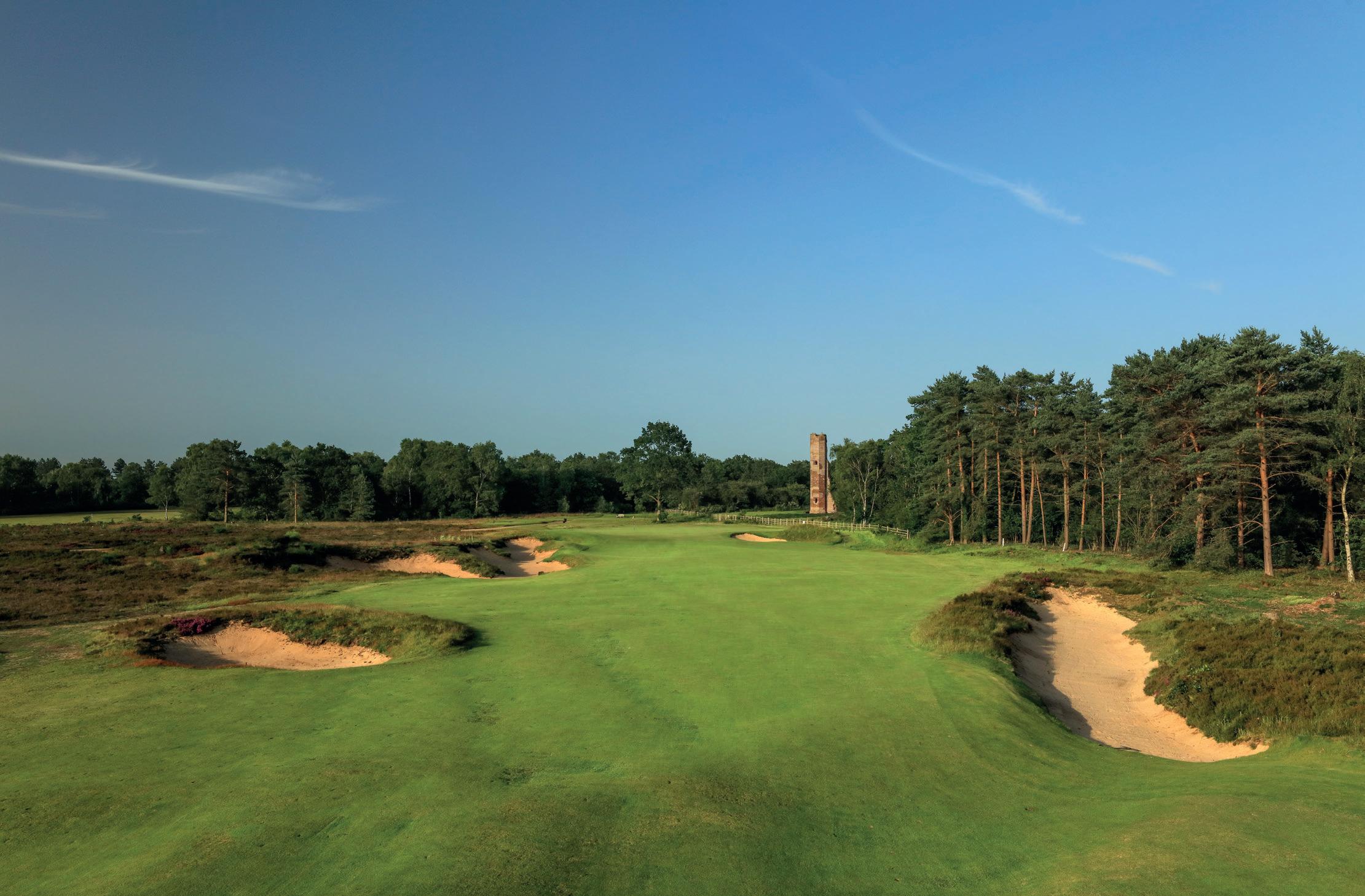
is designed as a scrape and then you want it deeper you landscape around it. That didn’t happen here. It got to the point where it was ‘standing room only’ at the bottom.
I have witnessed championships with top players taking seven, eight and nine shots to get out. When it gets to that point, it isn’t right. You can go and play in an Open Championship, get a bad break, get in one of those pot bunkers where you can hardly stand to it and that’s the way it goes. But you can’t have it where you walk into a bunker and you really can’t play out of it – because of the way they had deteriorated and collapsed.
project would be as extensive as it became? Yes, I did. I knew it needed a huge amount of work. Perhaps the human element in terms of the effect on our own staff may have been underestimated. However, I always knew, that once we started, there was no going back.
How did you persuade Tom Doak? He’d designed Renaissance but hadn’t done a lot of work in the UK… When we said ‘it’s time to do something’, we were slipping down the world rankings – though that wasn’t the only reason for doing it. We just weren’t as good, or as tidy, as we should have been. We put feelers out there to architects and asked them to
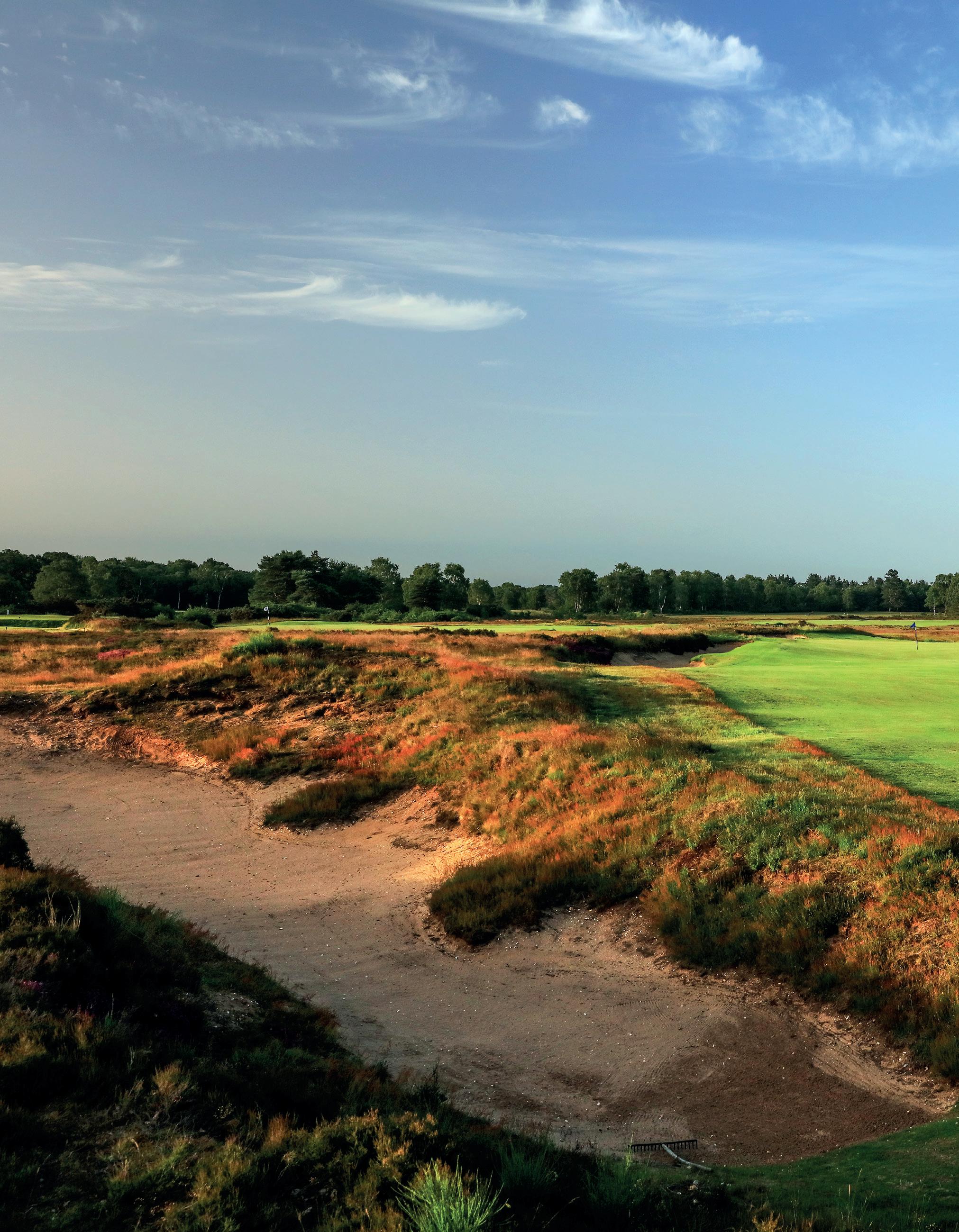
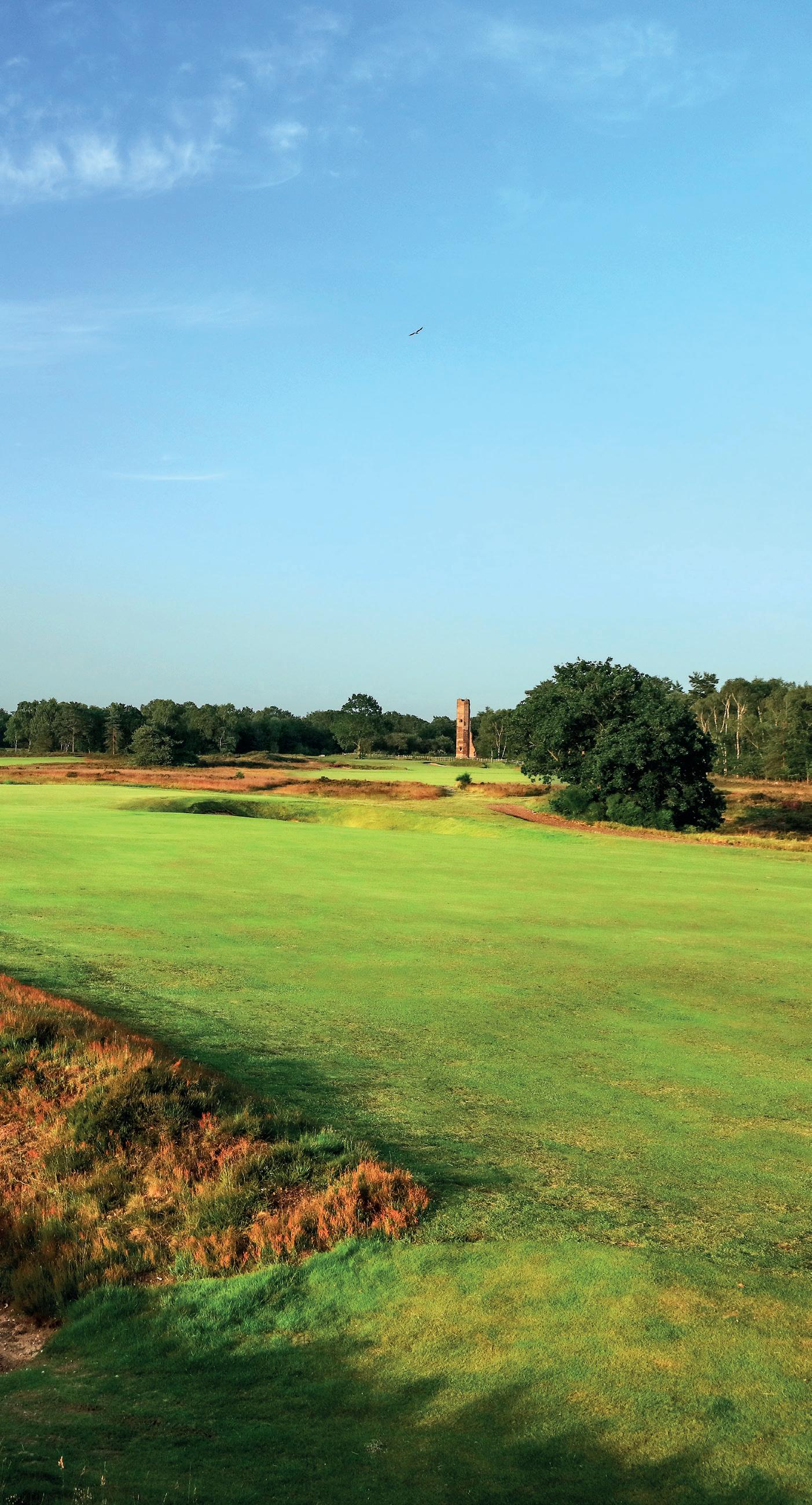
tender. I’m a massive fan of Tom Doak. I make no secret of that and I think he is a genius. I did have a little bit of inside information in that I knew Tom was a fan of Woodhall Spa. We all thought that ‘if you don’t ask, you don’t get’. That was our attitude and we rang Renaissance Golf.
He was excited about the project and appreciated our enthusiasm for renovating a unique and iconic course.
What’s he like? He’s a genius, without question. He’s thoughtful and only comments when he is ready to do so. He thinks very deeply about things. He gets the golf course and why they are as they are. His knowledge is just spectacularly good. You’d think that if you put him in front of people he wouldn’t talk very well, because he’s a quiet and reserved character, but he is one of the best orators. We held open evenings for members. We had interviews on film and his reaction, and his ability to talk, was second to none. He was just fantastic.
Everything is calculated to the millimetre in golf course architecture, but he works by eye… I always thought that anyone who renovated this course would have to work like that. It wasn’t a surprise to me. I could tell that within 10 minutes of talking to Tom that he would need the opportunity to work freely. We managed to get the best of both worlds by having a development plan to work from but giving enough freedom to re-work areas that didn’t quite look right. We worked the project within budget, but we gave him enough artistic license to adjust on the go.
There were some really classic examples. He’d be here, his guys would work a bunker, and he’d go back and wasn’t happy. He’d make them do it again and again.
There was one bunker and on the fourth attempt it was right. What was interesting was they spent a day and a half on that bunker alone, with these different iterations, and if that had been drawn from a plan you wouldn’t have got that end product. So, from my perspective, that was the best possible way to work.

For you, his idea of evolution and not revolution was of huge importance? That was the crucial thing. No one is going to walk out there and think ‘this is a Tom Doak golf course’. This has been restored with such a level of historical interest, care and awareness of the surroundings. The work that has been done is so natural it looks like it has been there for 100 years. It doesn’t have anyone’s stamp on it. That’s what I like – that it has been done in a most sensitive fashion. What challenge does the restored course provide? It was previously seen as brutal in a lot of respects… The challenge is still there – believe me! What has been interesting is that by clearing out trees and gorse that had affected so many holes, it looks like we have opened up some holes and made them easier. Ironically, quite the opposite has happened – on some of the doglegs the golfer now has options. That can be confusing and builds uncertainty
in the mind.
Many of the gorse bushes and trees directly behind the greens were removed so that a loss of perspective was achieved. This makes judging the second shot harder. Some fairway bunkers were either moved or removed to be in keeping with how the modern game is played. The penal characteristics from the tee still exist because of the long carries over heather but we do have generous fairways.
It looks tight because the penalty
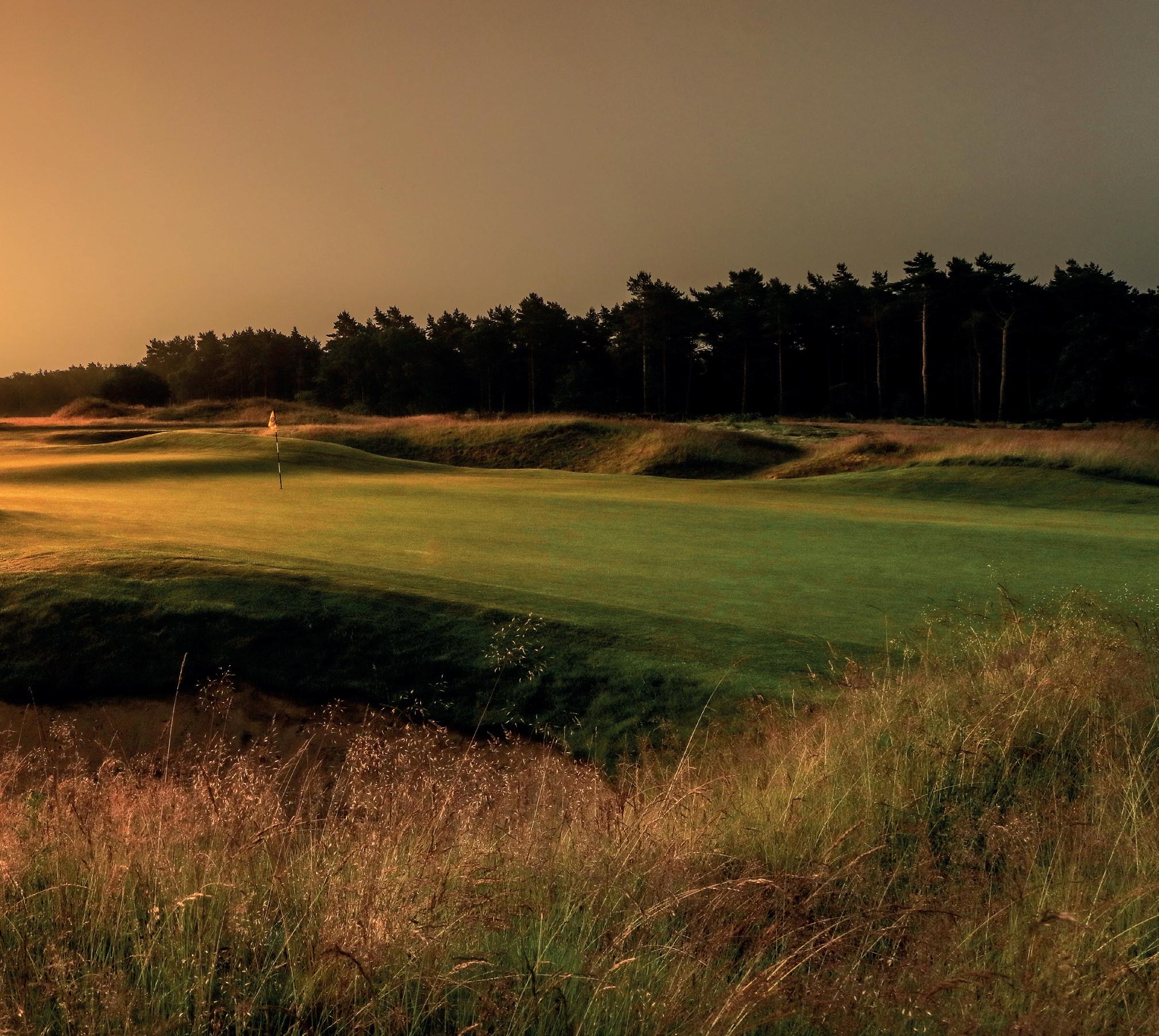
for missing a fairway is very evident, but the fairway may be 40-50 yards wide. The design does con you a bit.
Previously, if you’d driven into a fairway bunker you couldn’t get more than 20 yards out of it. That’s not the case now. There are certain fairway bunkers that, if you get the right lie and the right conditions, you can hit it 150 yards.
Around the greens, we’ve widened and lengthened them by going back to the original shapes. We’ve added a significant amount of green area back in and many of the championship pin positions of previous years can now be reintroduced.
We’ve altered the maintenance regime of the green collars, so the first cut is shaved a bit. We now have some interesting run-off areas. It presents a different challenge and I haven’t noticed a drop in scoring.
Has the very positive reaction to the project made the emotional toil worthwhile? Tell me about
the challenges you and the team faced… It was an emotional time. It still is emotional now! When I look back, and talk about it, it was a challenge – one of the biggest I have ever taken on.
There were times I felt a very lonely man, particularly when things were going wrong. There were times when the weather went against us. Maybe it was a big risk that we took, but we successfully came out the other side!
We decided that, given the age of the course and its importance to the country, we would carry out as much work as possible in-house. We have 16 greenkeepers and it’s not a massive team for the scale of the site and the many areas that

are required to be maintained.
We reckoned we could do it. We were originally going to do three holes a year for six years but it ended up being six holes a year for three years.
Tom produced a plan and agreed to oversee the shaping work but he wanted his own team to carry out the work. They shaped the ground, left site, and we would reinstate everything.
Maybe that was where we slightly underestimated what that meant. We were taking on a project to renovate six holes, starting on December 1 with the aim of having the course fully open by March 1.
That’s fine, if the weather stays good! If it goes bad, you’ve got a problem.
The first year, we picked what we classed as the easiest holes to do. They were 7, 8, 9, 10, 11 and 13. It was mainly bunker work. We weren’t taking greens up.
We were reshaping and slightly altering the angles and lengths.
That was apart from the 13th, as we moved the fairway 25 yards to the right, which meant we had to take a number of mature trees out and put the fairway where it used to be. That was a decision taken during the project and, in the middle of February, we were just about finished and ready to turf the fairway – knowing in the middle of May we were hosting the Brabazon Trophy. We got lucky. The weather was perfect and
ACHIEVE CUSTOMER SERVICE EXCELLENCE
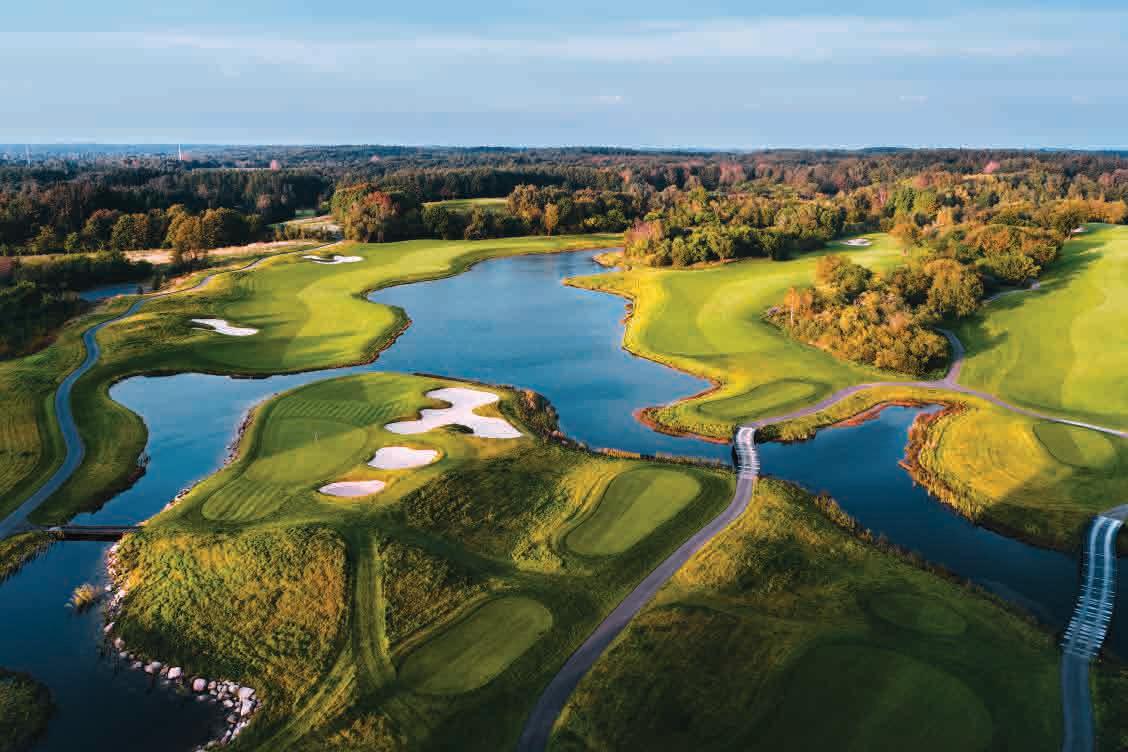
59club delivers the expertise, intel and motivation to breed customer loyalty, increase spend, secure referral and repeat business.
MYSTERY SHOPPING SATISFACTION SURVEYS TRAINING & EDUCATION
We can start working with you for as little as £600 p.a. Contact Matt Roberts, 59club Director matt@59club.com
Chris May CEO, Dubai Golf

the turf we put down took ever so quickly. We sailed through and thought ‘this is fairly straightforward’.
But it wasn’t… We came to phase 2, picked the next six holes, which included two of the greens being taken up. The shapers came again at the beginning of December. The weather was pretty difficult while they were here.
They left a much bigger area to reinstate. As it was so wet, cold and snowy, the machinery did a little bit more damage than expected. We had two greens up and, within four days of them leaving, the ground froze and it went down to minus 16. We couldn’t lay any turf for seven weeks. All the turf should have been down by Christmas and the work didn’t really start until the end of January. Then the weather was awful. We’d have three or four days’ respite and it would freeze again. Then it snowed.
You had some sleepless nights… That was the worst time of my working life. We were not only involved in the restoration project, but we were having to prepare our second course for daily play, keep the extensive practice facilities open for squad coaching along with running the other aspects of the business.
The Hotchkin Course, truthfully, wasn’t quite ready for play by April 1 that year but we managed to open, after some difficult decisions. We had experienced ‘the Beast from the East’ in March, and then when the end of April arrived it didn’t rain for three months.
We were all working long hours, often with lights on helmets in the dark to get the turf down. It was a very challenging time!
How did you come through that? In fact, the whole of 2018 felt like it was never going to end with weather related issues.
It’s a pretty lonely time and you have to be very strong-minded and believe in what you are doing. There were times I did have my doubts – we’ve just dug a national treasure up, we are trying to get it fixed and it’s gone against me. There are so many parties to please – members, England Golf, thousands of visitors, a fair amount of repeat business and also to achieve the aims of the business. We have our own status in the
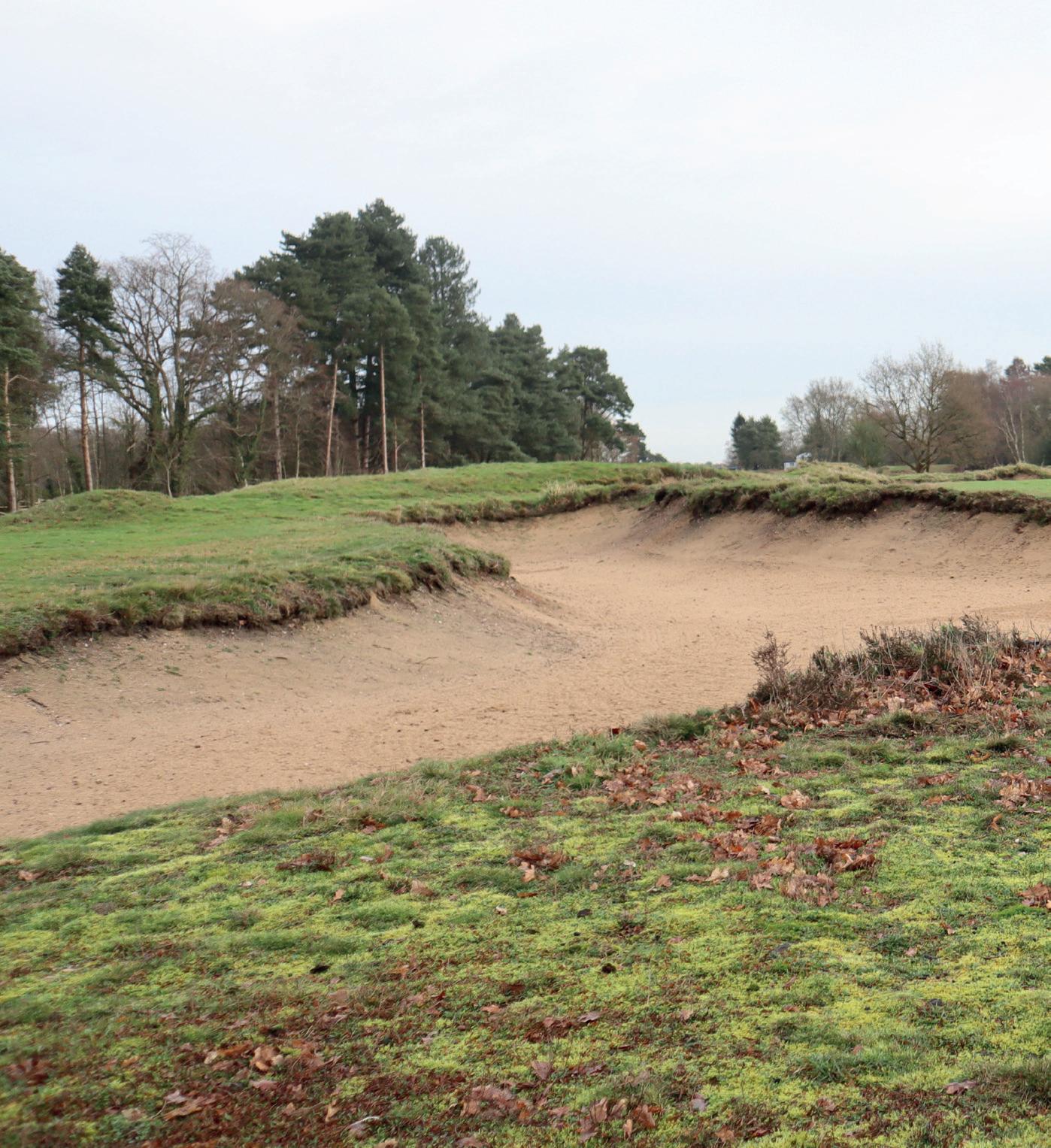
world of golf. I have to juggle it all! You come through it and you have to pick yourself up, dust yourself down and make it happen. That’s what we did.
We did lose staff along the way. It wasn’t easy. We were working some very long hours and it was difficult to find qualified replacements.
The hardest thing for me was getting everyone motivated for the last phase.
We thought ‘if this happens again…’
But we got into November 2018, had perfect weather, and were so much savvier on how we did things.
We took the 15th green up, they
Woodhall Spa The National Golf Centre, and the home of English Golf, Woodhall Spa has two magnificent courses. The Hotchkin is rated as one of the world’s finest heathland golf experiences and is a fixture of global top 100 rankings. Tom Doak’s extensive three-year renovation project has only enhanced that reputation. The Bracken was opened in 1998 and its contrasting landscape of woodland and farmland has established Donald Steel’s creation as a fine course in its own right. The practice facilities were already renowned throughout the country but a recent upgrade has also brought an exceptional putting studio and strength and conditioning centre.

reshaped it and it went back down in three days. The experience of phase two made us very slick on phase three.
Ironically, phase three was the most dramatic because of the remaining holes had slight elevation changes.
The first four holes were returned to heathland and many of the old (huge) bunkers were reintroduced.
At the 15th we stripped the hole of scrub and re-shaped the green. The 18th virtually became a new hole once many trees were taken down.
Renovations are common now at clubs. What advice would you give to managers about your experience? We did it internally because it mattered to us (the management team), our courses manager and his team. They said very clearly they wanted to do it and didn’t want contractors on site.
It’s more cost effective but you have to understand the human parts of it.
We’re trying to make a film about it and the editor said there were two elements we must bring out: courage and human endeavour. He said to have the guts to do it in the first place, to take on what we did, was very brave; appointing the right architect and then the human part of it and the effect it had on all our lives. There was a bond built but it tested working relationships and friendships.
And now, a year on from completion, was it worth it? Absolutely. We can say ‘mission accomplished’. We did everything we set out to do and probably more, actually. We created a golf course that’s a far better test.
That’s been recognised by us going up in all the ranking lists. People have recognised what we’ve done.
Would I do it differently? Possibly. But when you realise it has been recognised you feel it has been worthwhile.


NATIONAL GOLF DAY BRISTOL & CLIFTON GC JUNE 8TH 2020
ENTRY: £50 | TEE TIMES FROM 12 NOON INCLUDES LIGHT LUNCH ON ARRIVAL 18 HOLES OF GOLF, EARLY DINNER, PRIZES

Good PRACTICE
Advice on golf club management issues – from fi nance to clubhouse rules and employment law











